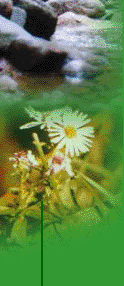Magical imagery
predominates throughout Isabel Allende’s writings. From supernatural events to ghastly cameo delineations of her characters,
Allende reveals to the reader a mystical and occult world. Reality is so carefully intertwined with magic, this genre is referred
to as magical realism. From the unearthly description of Rosa in The House of the Spirits to the miraculous healing powers of Asian medicine in
Daughter of Fortune, Allende often refers to mythology, superstition and religion to add a sense of magic.
Allende also uses political imagery to condemn
the Chilean dictatorship. Her vivid description of the political world serves to illustrate the intricacies of politics. Her
use of political symbols and allusion to historic personages subtly adds up to her critique. She portrays the heroic revolutionary
character in a sympathetic light, encouraging political involvement and change.
Finally, she employs natural imagery to maintain
the connection with the natural world. The use of pathetic fallacy channels the characters’ feelings and provides a
deeper understanding of them. With the natural imagery, Allende also conveys the love for her country. Nature is usually soothing,
relaxing and inviting, as Allende encourages the reader to regain that lost connection with Nature.



